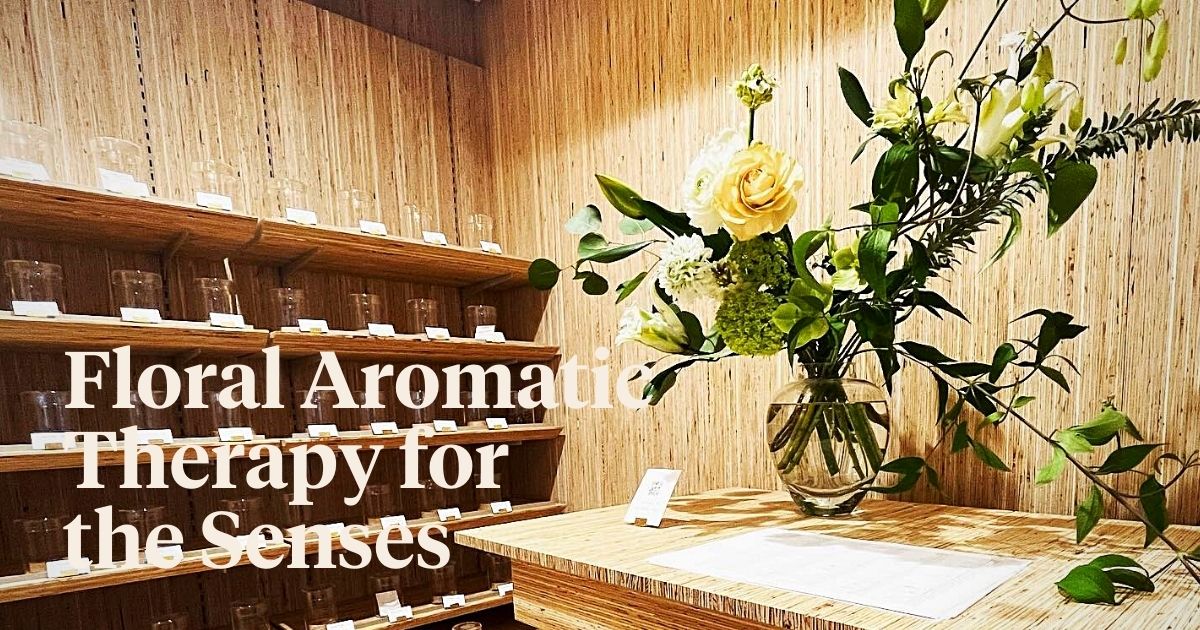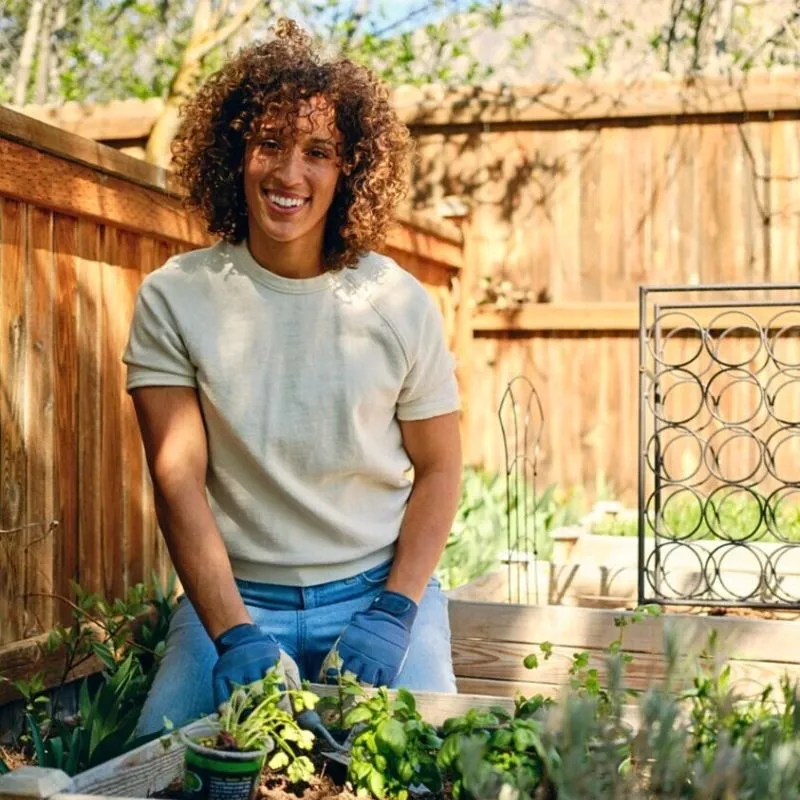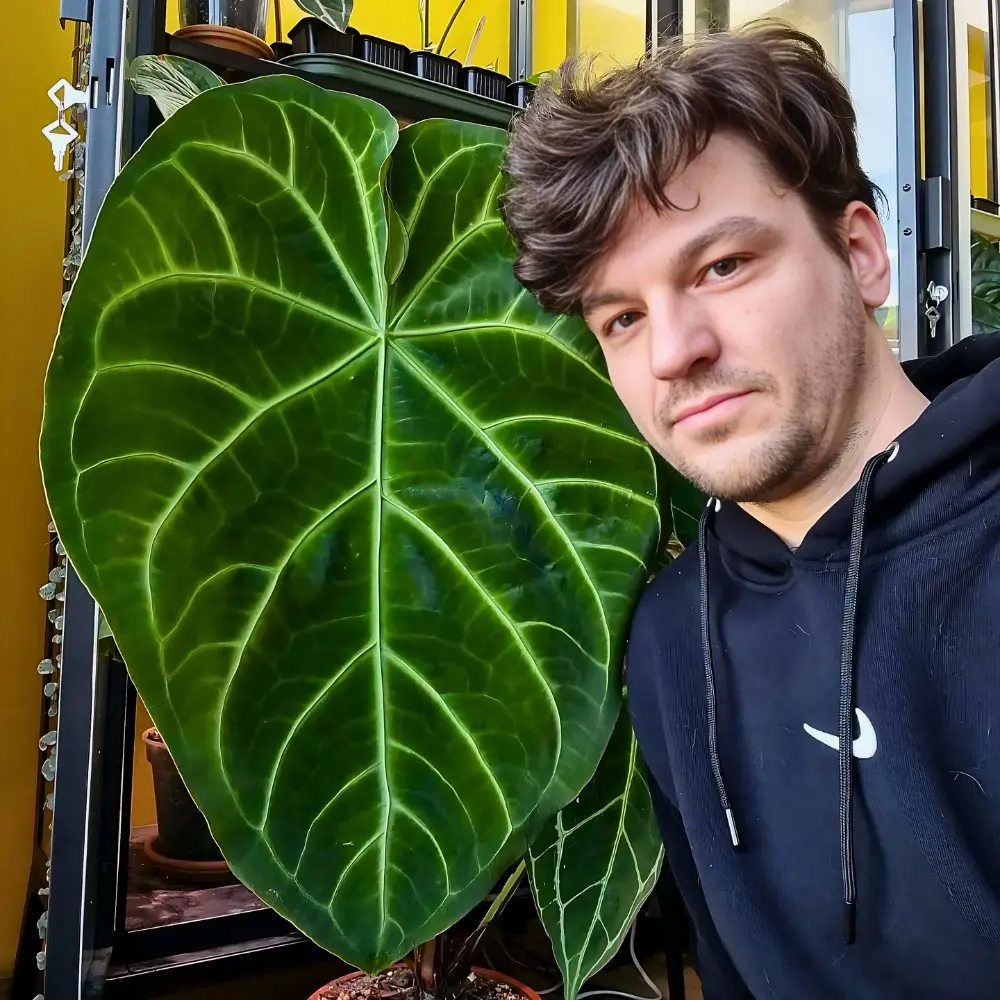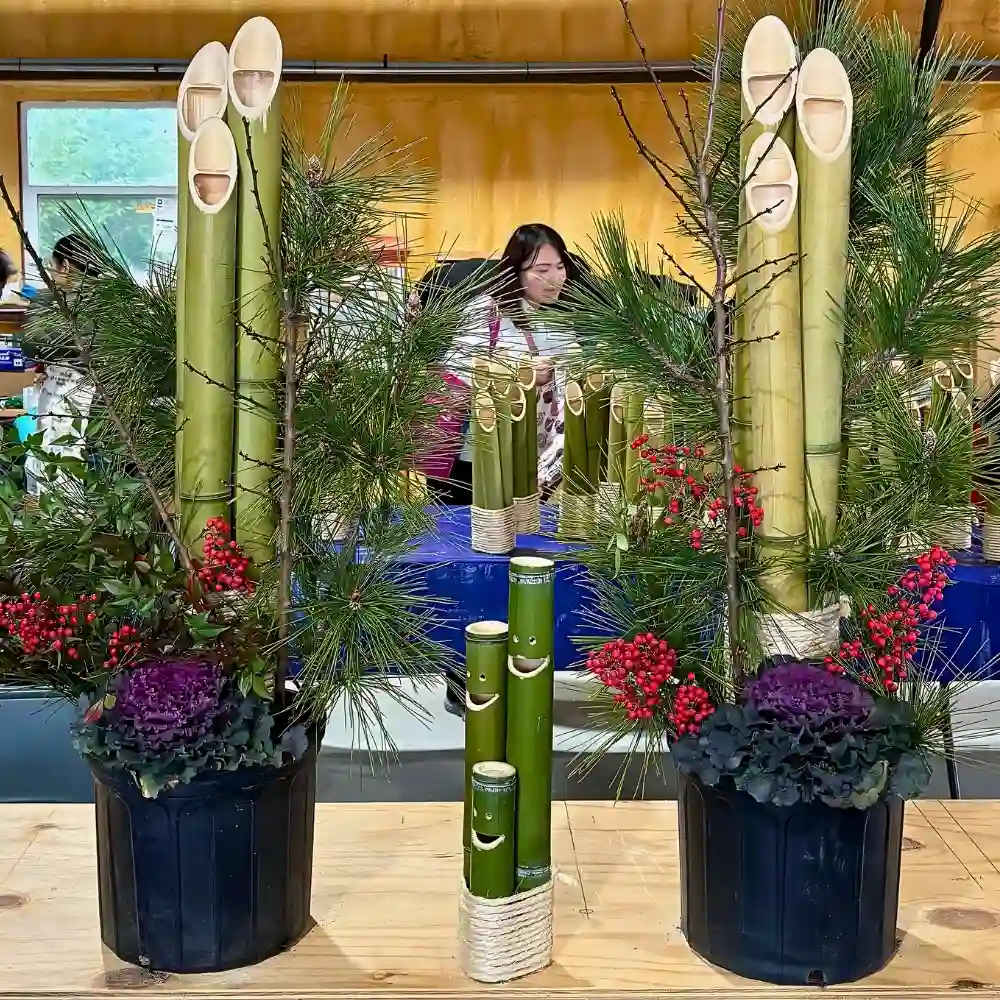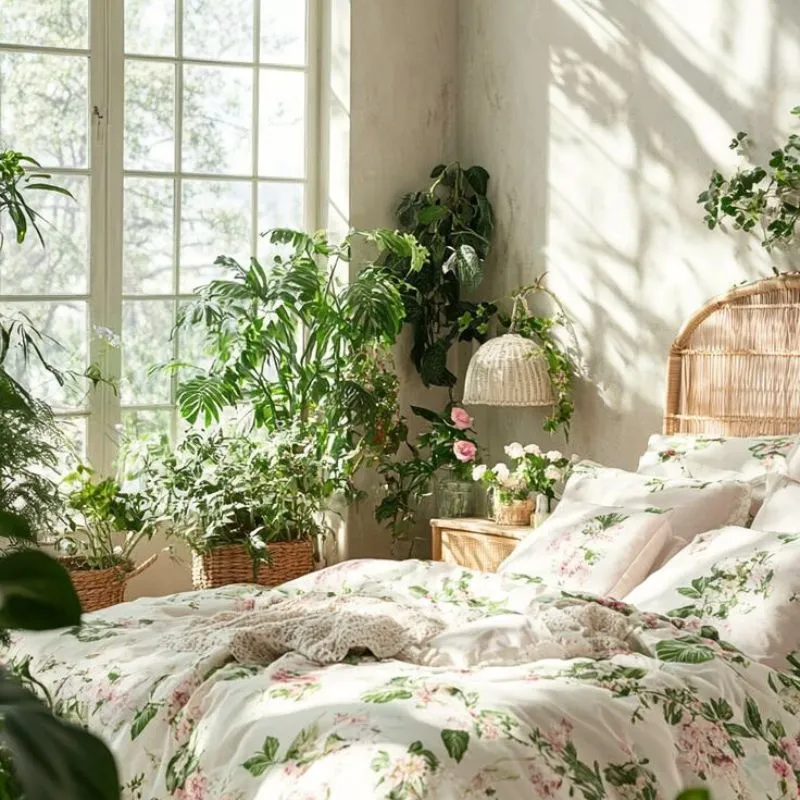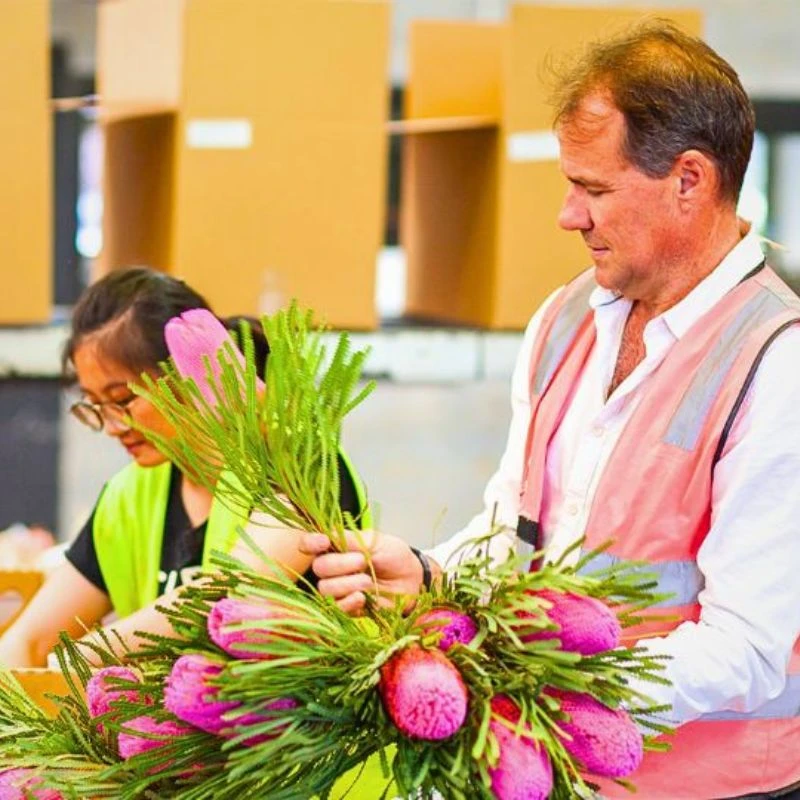Nestled in the ever-lively district of Harajuku in Tokyo, AEAJ Green Terrace, a sensory escape that blends aromatherapy, sustainable design, and Tokyo's vibrant culture, presents a uniquely seamless integration of architecture, nature, and the therapeutic aroma of plants. This innovative establishment, conceptualized by the Aroma Environment Association of Japan (AEAJ), offers a serene escape from the bustling city.
Designed by the renowned designer Kengo Kuma, AEAJ Green Terrace promotes the mental and physical well-being of guests while championing environmental preservation through the phenomenon of aromatherapy in a harmonious relationship with nature.
Architecture That Blends Tradition Elements and Modernity
Kengo, the architect behind AEAJ Green Terrace, masterfully combines traditional and modern elements in the design of this remarkable structure. The building showcases his characteristic style, which seamlessly blends with its surrounding environment, while still offering all the benefits of nature's aromatherapy.
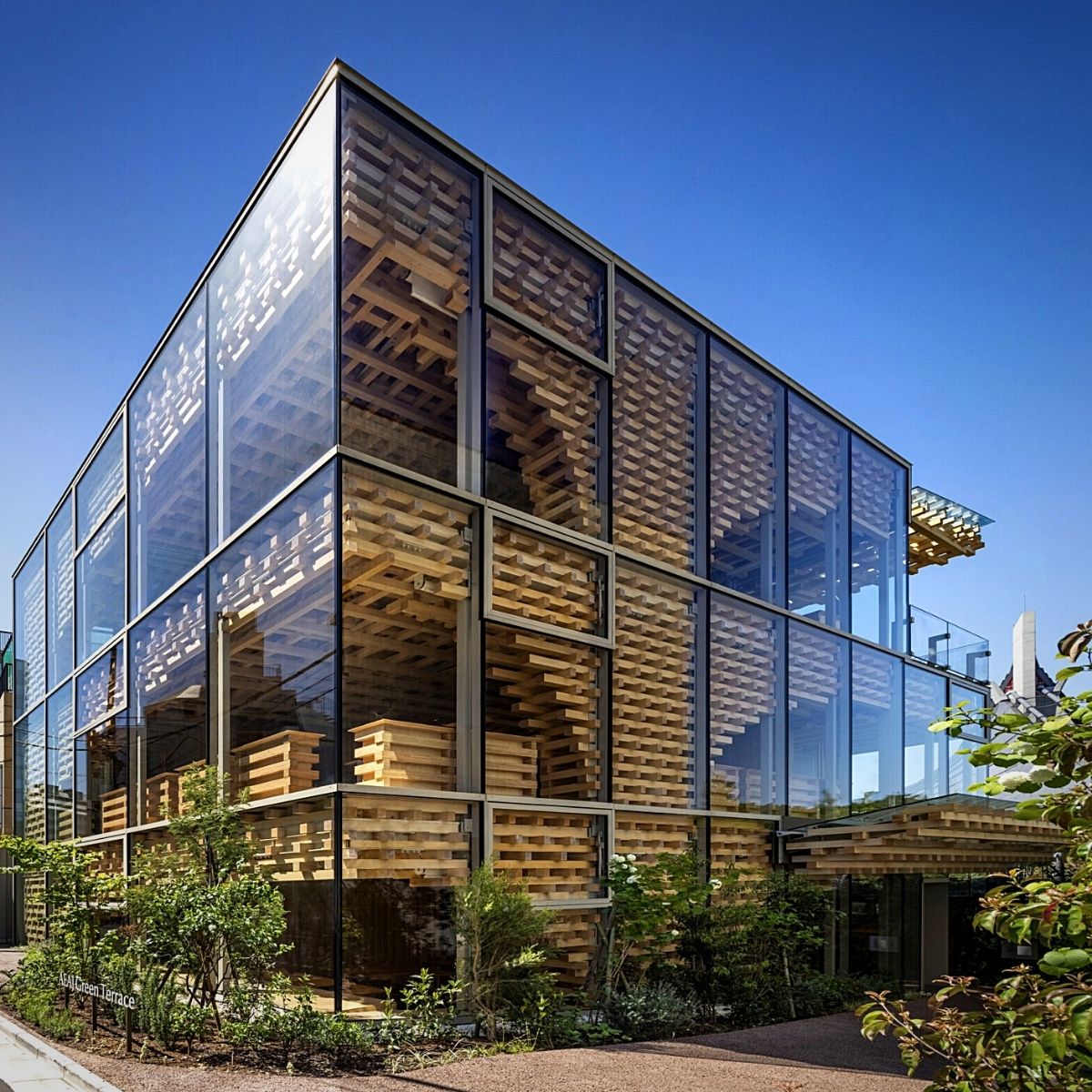
Photo by @forgemind
Standing right at the intersection of tradition and modernity, AEAJ Green Terrace enthralls guests with its plan that features three stories of floor-to-ceiling windows and an interleaved frame of wooden beams. This construction technique, reminiscent of traditional Japanese carpentry used in temples and shrines, entails the careful alignment and shaping of lumber, with minimal use of nails or metal fittings.
Inside, a web of wooden beams extends across the ceiling and walls, strategically allowing natural light to filter through. This effect, known as ‘komorebi’ in Japanese, conjures the enchanting play of sunlight piercing through a dense forest. The use of natural materials and the incorporation of traditional architectural techniques create a serene atmosphere that motions all those who visit it to reconnect with nature and themselves.
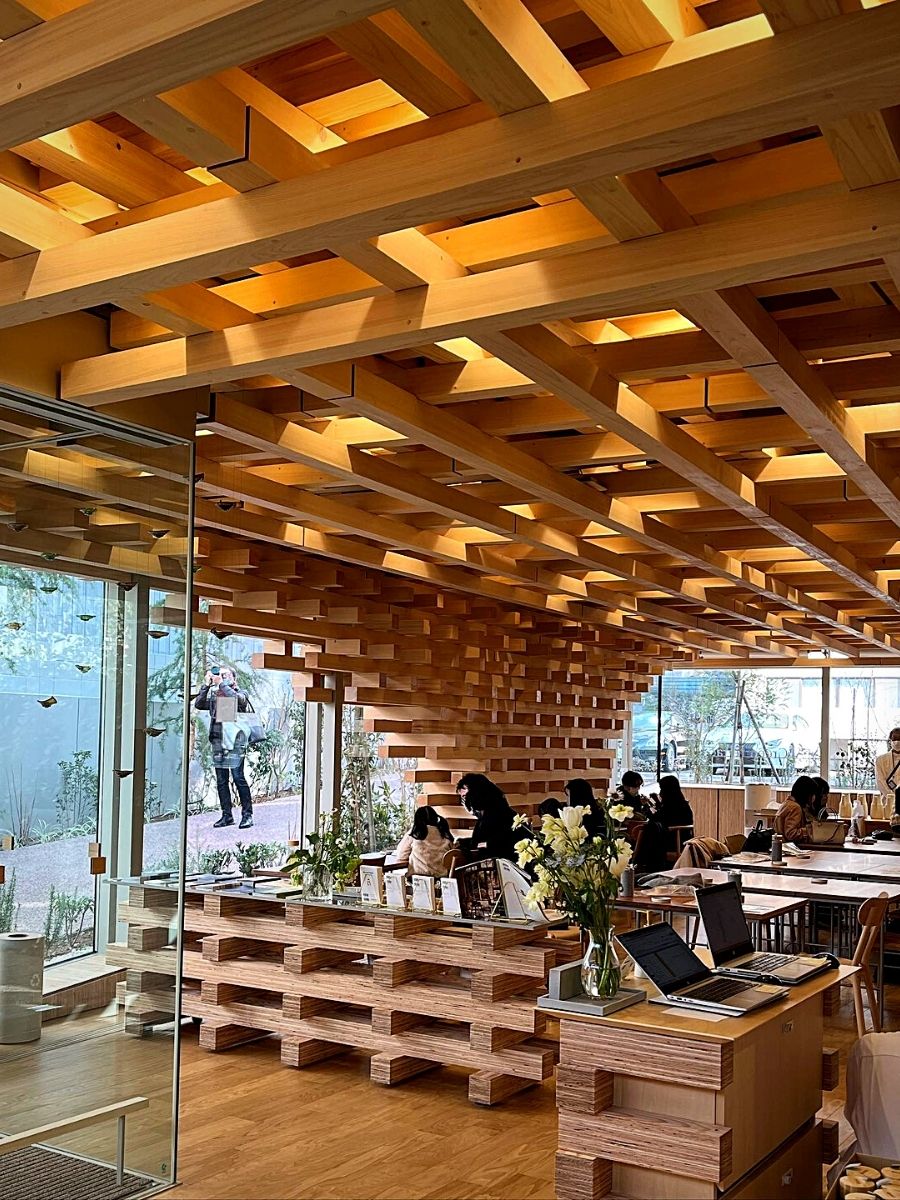
Photo by @herbal_d_m
A Commitment to Sustainable Construction and Environmental Preservation
AEAJ Green Terrace promotes environmental consciousness through its sustainable construction practices in several ways. For starters, the architectural design of the building incorporates sustainable materials, with a particular focus on wood. Kengo, the architect, utilizes sustainably harvested lumber obtained through thinning methods that ensure the health and vitality of forests. This approach reduces the ecological impact associated with construction materials and promotes responsible forestry practices.
A key environmental benefit of using wood in construction is its ability to sequester carbon dioxide. As trees grow, they absorb carbon dioxide from the atmosphere, effectively acting as carbon sinks. In its use of wood in construction, the building offsets carbon emissions that would have been produced through alternative construction materials like concrete or steel.
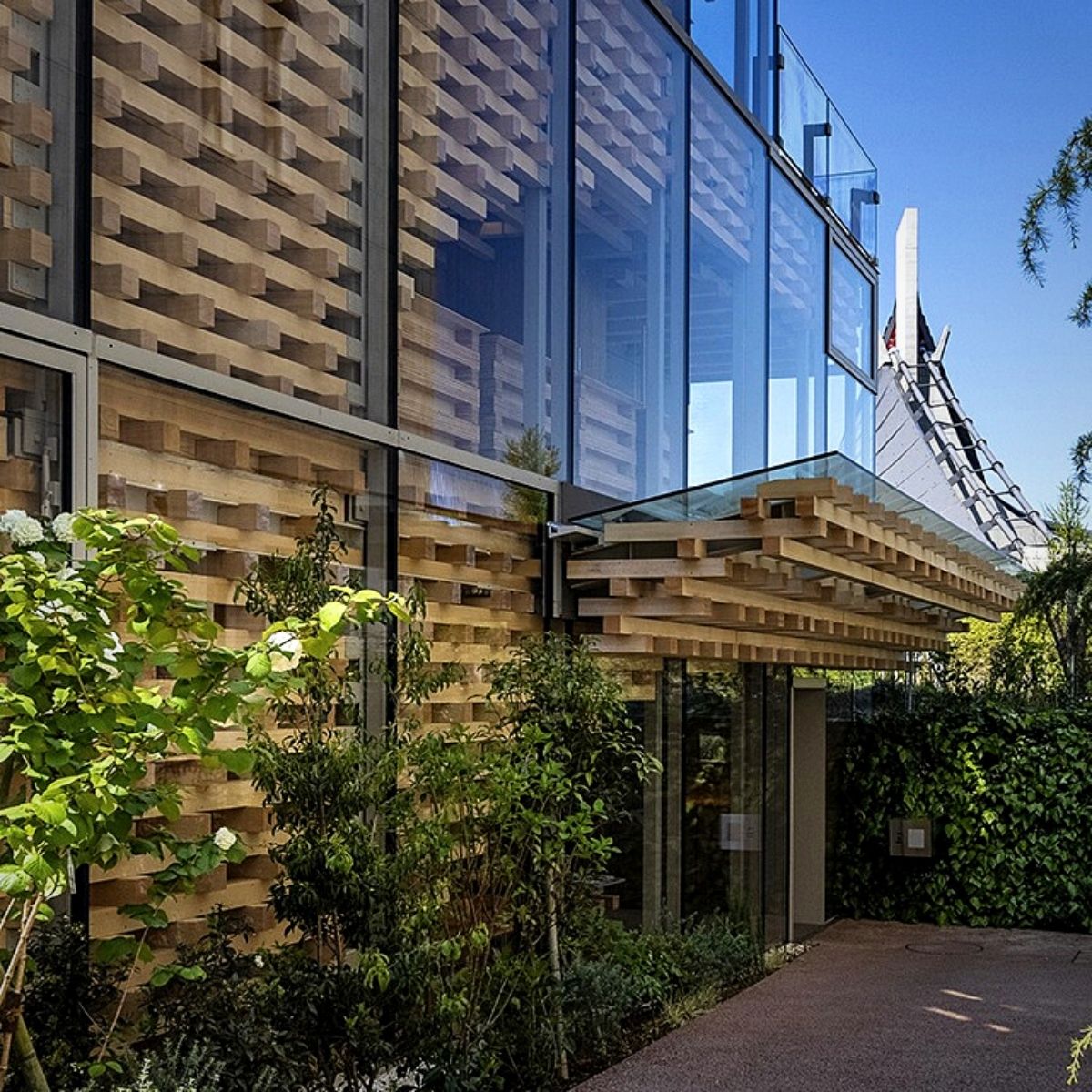
Photo by @forgemind
AEAJ Green Terrace, also, incorporates energy-efficient design elements to minimize energy consumption. The abundant use of floor-to-ceiling windows allows natural light to flood the interior spaces, reducing the reliance on artificial lighting during the day. Additionally, the strategic placement of windows facilitates natural ventilation, reducing the need for mechanical cooling systems and promoting energy efficiency.
It, similarly, demonstrates an obligation to waste reduction and recycling. Recycled clay roof tiles, a traditional feature of Japanese architecture, are repurposed for the front walkway, giving new use to materials that would have otherwise been discarded. The creative transformation of recycled essential oil vials into art pieces further showcases the building's devotion to repurposing materials and reducing waste.
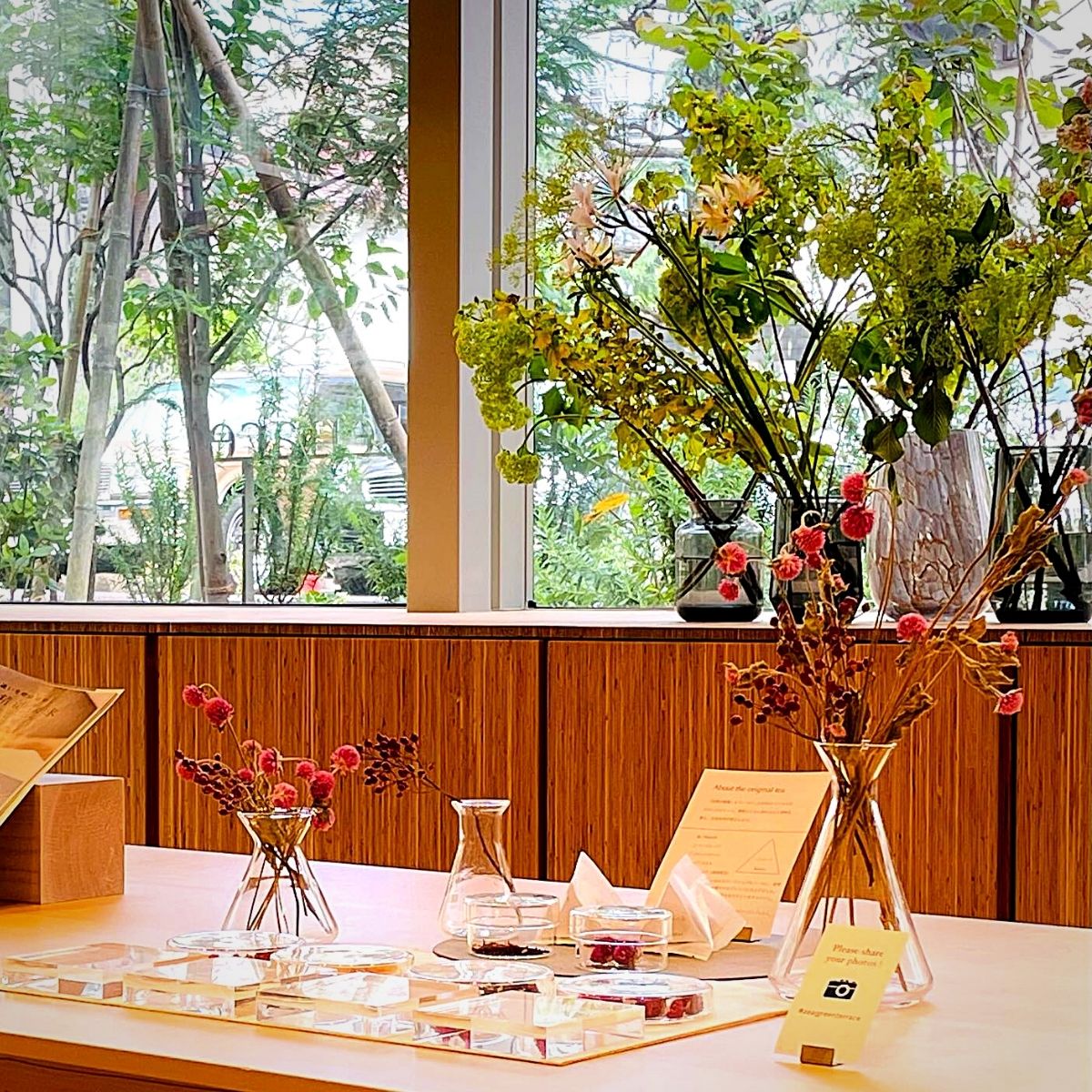
Photo by @ncafe.tsubomi
What’s more, it serves as an educational platform to raise awareness about sustainable construction practices. The building provides visitors with insights into the importance of responsible forestry, carbon offsetting, and the environmental impacts of different construction materials. This is achieved through its showcase of sustainable design principles and practices.
By integrating these sustainable construction practices, AEAJ Green Terrace presents a case of environmentally conscious architecture. It highlights the significant role that buildings can play in reducing carbon footprints, promoting responsible resource management, and an appreciation for sustainable living.
It also sets an example for future sustainable architecture, through its incorporation of nature and sustainable practices into the nature of Tokyo's active cityscape, hence contributing to the larger movement towards creating greener, more sustainable cities.
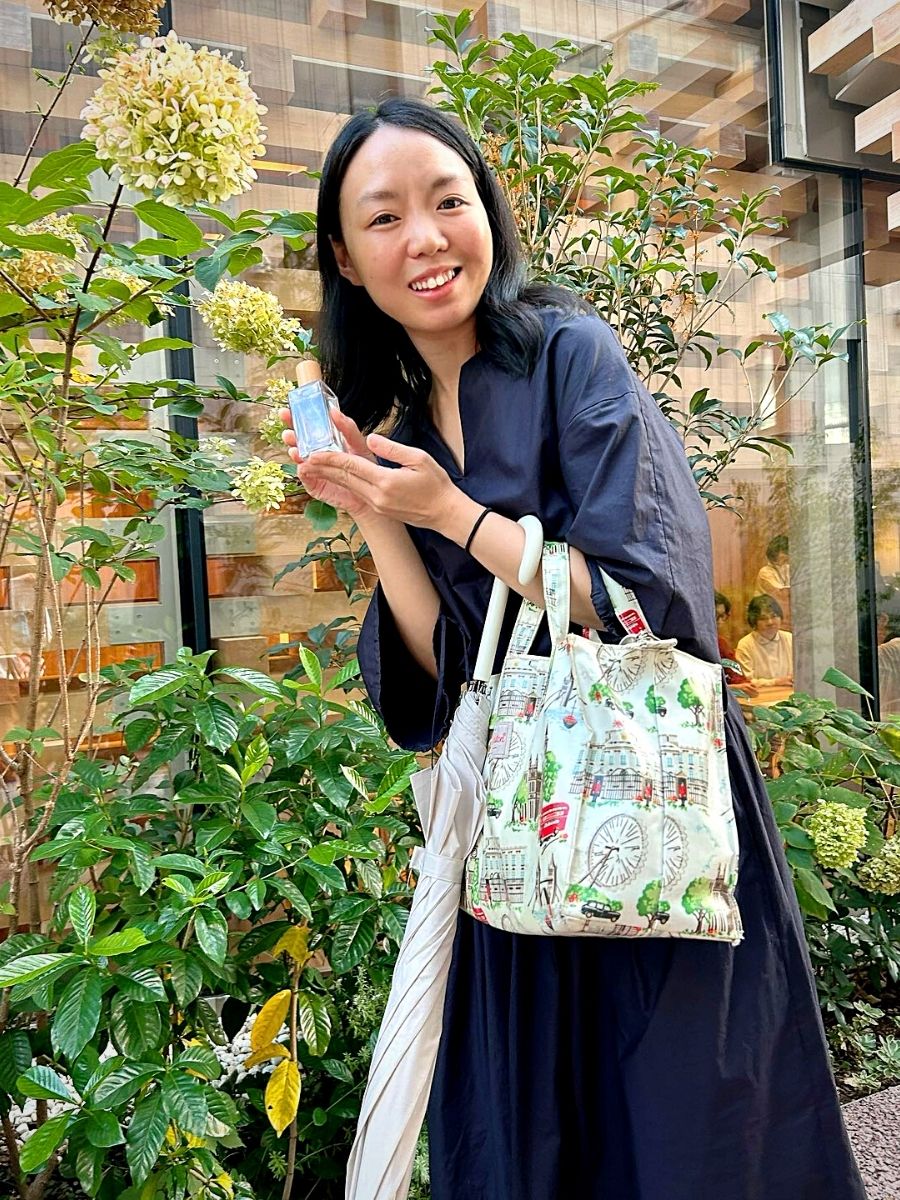
Photo by @risa.yoga.rose
As cities grapple with the challenges of urbanization and the need for green spaces that prioritize serenity and well-being, the integration of nature and aromatherapy can offer a plan for creating pleasant environments that benefit both people and communities.
Incorporating Nature and the Power of Aromatherapy for Well-Being
AEAJ Green Terrace is not only a visually stunning architectural phenomenon but also a sanctuary that demonstrates the effectiveness of deploying nature and flowers in enhancing well-being. Kengo’s choice of sustainably harvested lumber, obtained through thinning methods that leave more nutrients for stronger trees, reflects AEAJ’s environmental values. Lumber, unlike concrete, absorbs carbon throughout its life, offsetting transportation emissions and contributing to a greener prospect.
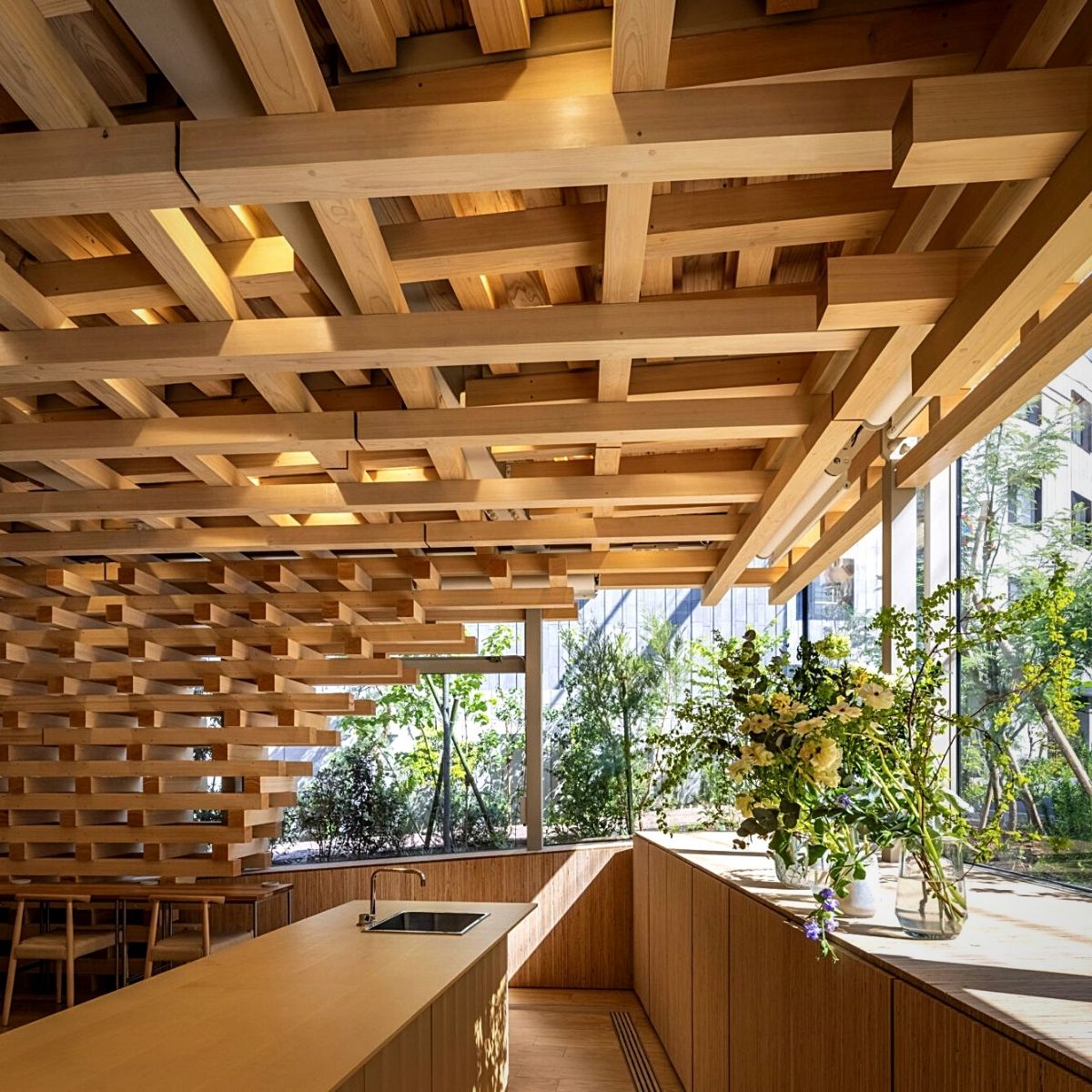
Photo by @forgemind
(You may also be interested in reading about different flowers used in aromatherapy and their floral scents.)
Moreover, the exterior of the building exemplifies the concept of reuse. Recycled clay roof tiles, a characteristic feature of Japanese architecture for centuries, are crushed and formed into the front walkway, while recycled essential oil vials are transformed into art pieces that reflect sunlight, symbolizing the coordination between human creations and nature.
In addition to its architectural elements, AEAJ Green Terrace boasts an Aroma Corridor, housing approximately 43 species of plants, some of which provide raw materials for essential oils. This biodiverse space not only showcases the beauty of nature but is also a learning platform that highlights the importance of preserving plant species.
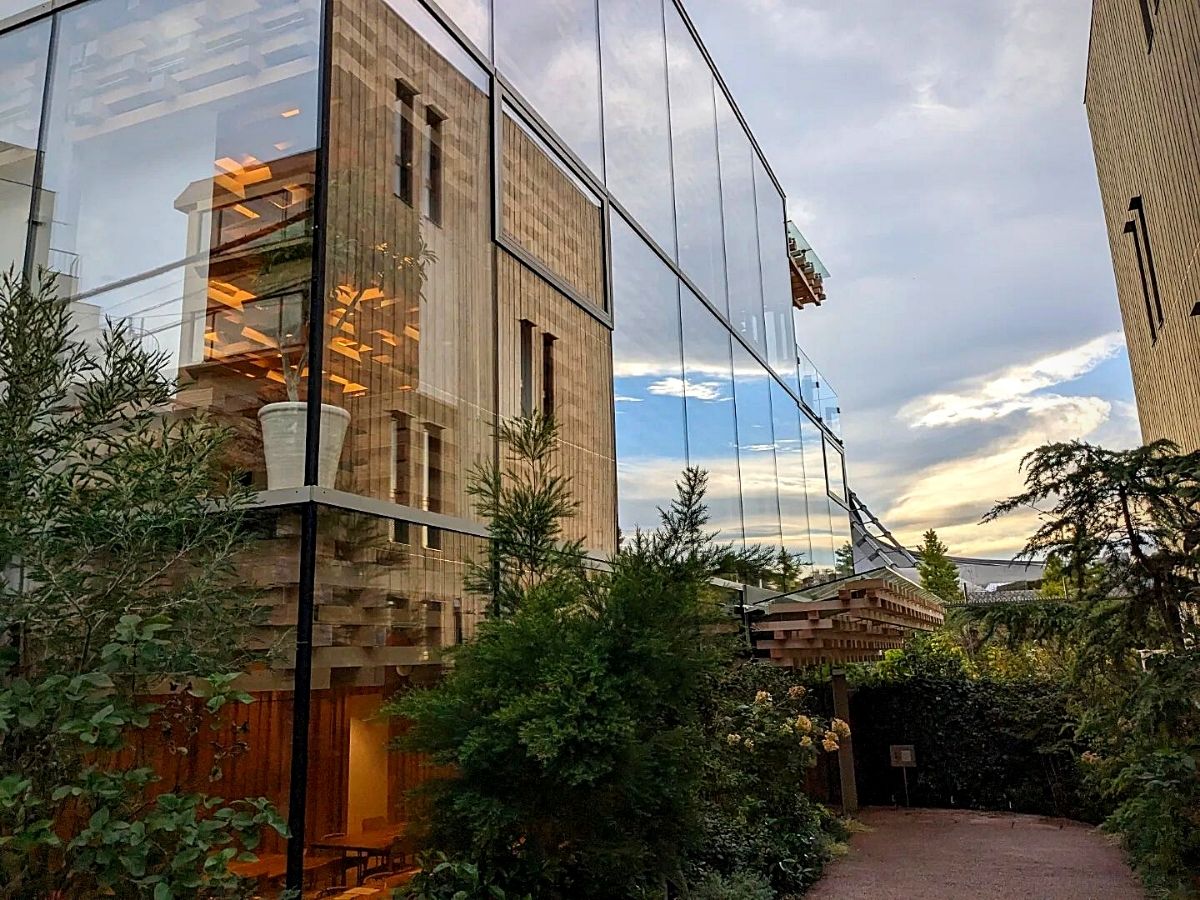
Photo by @ohanachan39
The Aroma Corridor also emphasizes the connection between nature and aromatherapy. This biodiverse space is carefully curated to provide visitors with an immersive experience that engages their sense of smell. It is designed to resemble a natural pathway, reminiscent of strolling through a lush forest or garden featuring varied plants each with their unique fragrance and therapeutic properties. The fragrances range from soothing floral notes to refreshing citrus aromas, offering a diverse range of olfactory sensations.
This space provides for relaxation, rejuvenation, and connection with nature, with the aromatic scents having a calming effect on the mind and body, and promoting a sense of well-being by reducing stress. Basically, the immersive experience encourages visitors to slow down, take deep breaths, and fully engage their senses, for a deeper connection with the natural world.
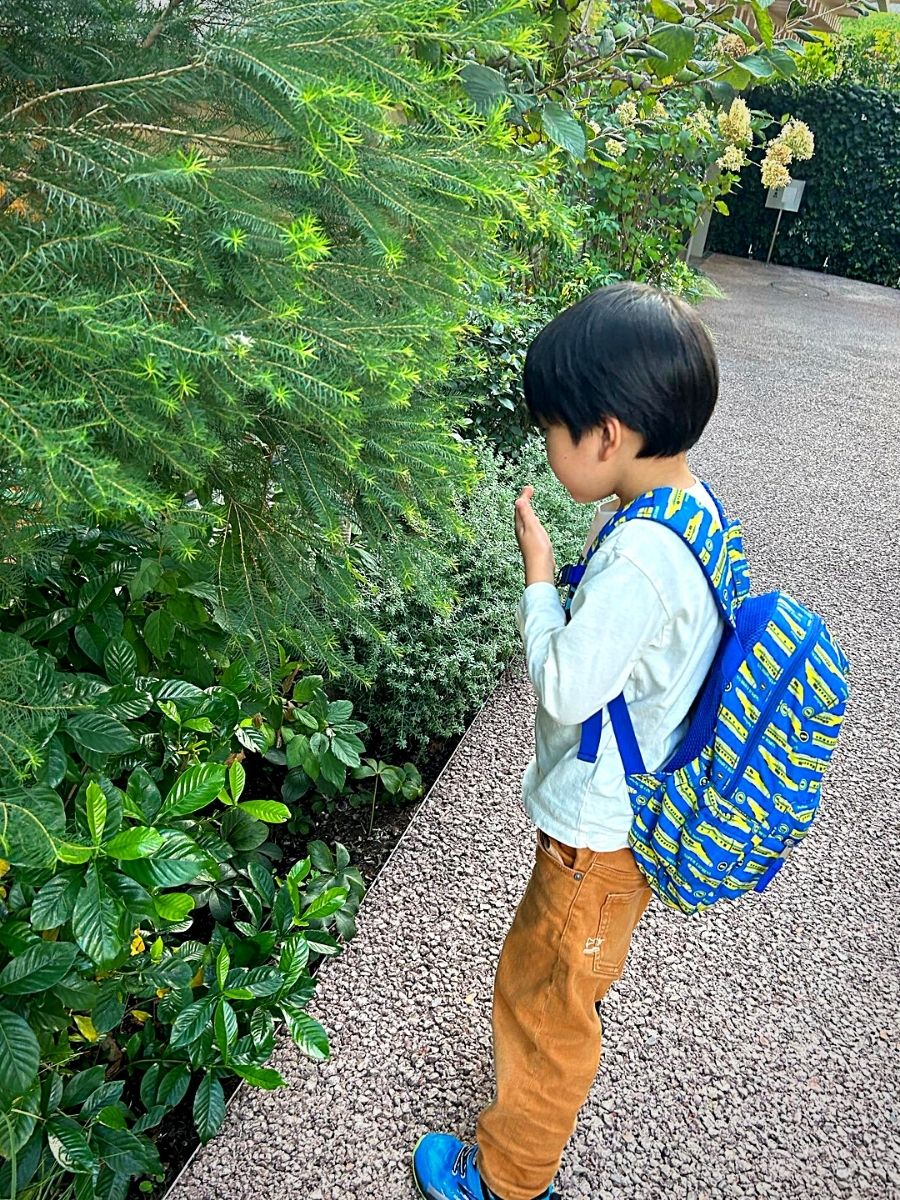
Photo by @risa.yoga.rose
In principle, the transformative power of aromatherapy is a key element that AEAJ Green Terrace is all about, as on entering the building, one is welcomed by the calming scent of Japanese cypress, setting the stage for a unique sensory journey.
Likewise, the building’s Aroma Laboratory, which hosts varied fragrances, offers over 300 aromas from around the world. Here, one can experience scents ranging from the refreshing yuzu, a popular citrus fruit in Japan, to saro, a plant used by herbalists in western Madagascar.
Its Aroma Lounge, with its rotating selection of blends inspired by literary works, immerses visitors in a space of olfactory joys. On the other hand, AEAJ's Periodical and the Aroma Library, home to a collection of 1,400 books in multiple languages, presents valuable resources for those interested in exploring deeper into the science and art of aromatherapy.
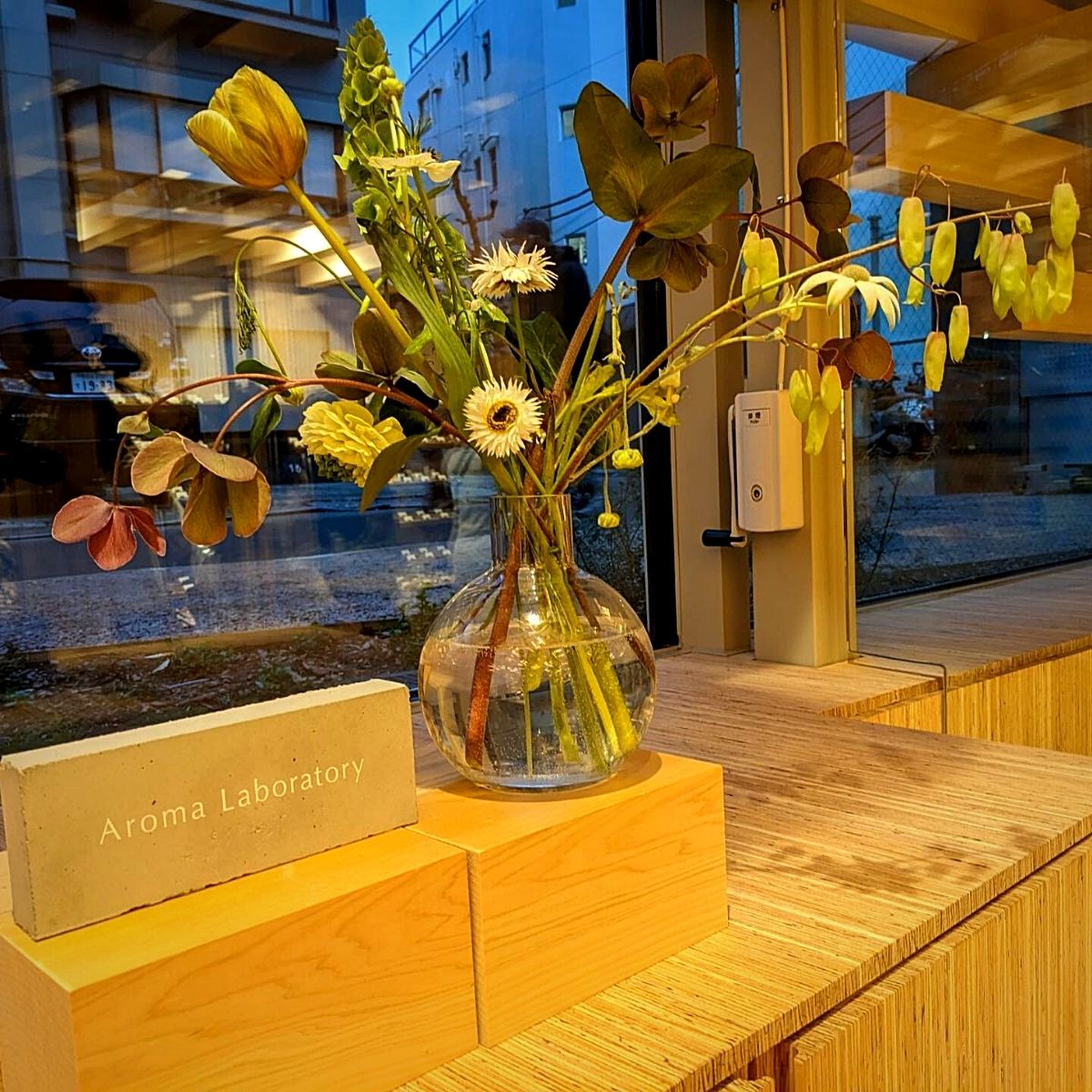
Photo by @nontan_tantan
The Palliative Power of Aromatherapy
Aromatherapy, sometimes called essential oil therapy, is the practice of using natural oils extracted from flowers, bark, stems, leaves, roots, or other parts of a plant to enhance psychological and physical well-being. The term ‘aromatherapy’ was coined by a French perfumer and chemist René-Maurice Gattefossé in a book he wrote on the topic that was published in 1937. He had previously discovered the healing potential of lavender in treating burns, and his book discusses the use of essential oils in treating medical conditions.
In recent times, aromatherapy, which is thought of as both an art and a science, has gained more prominence in the fields of science and medicine. It may help manage pain, ease digestion, boost relaxation, improve mood, and relieve menstrual symptoms, among other benefits.
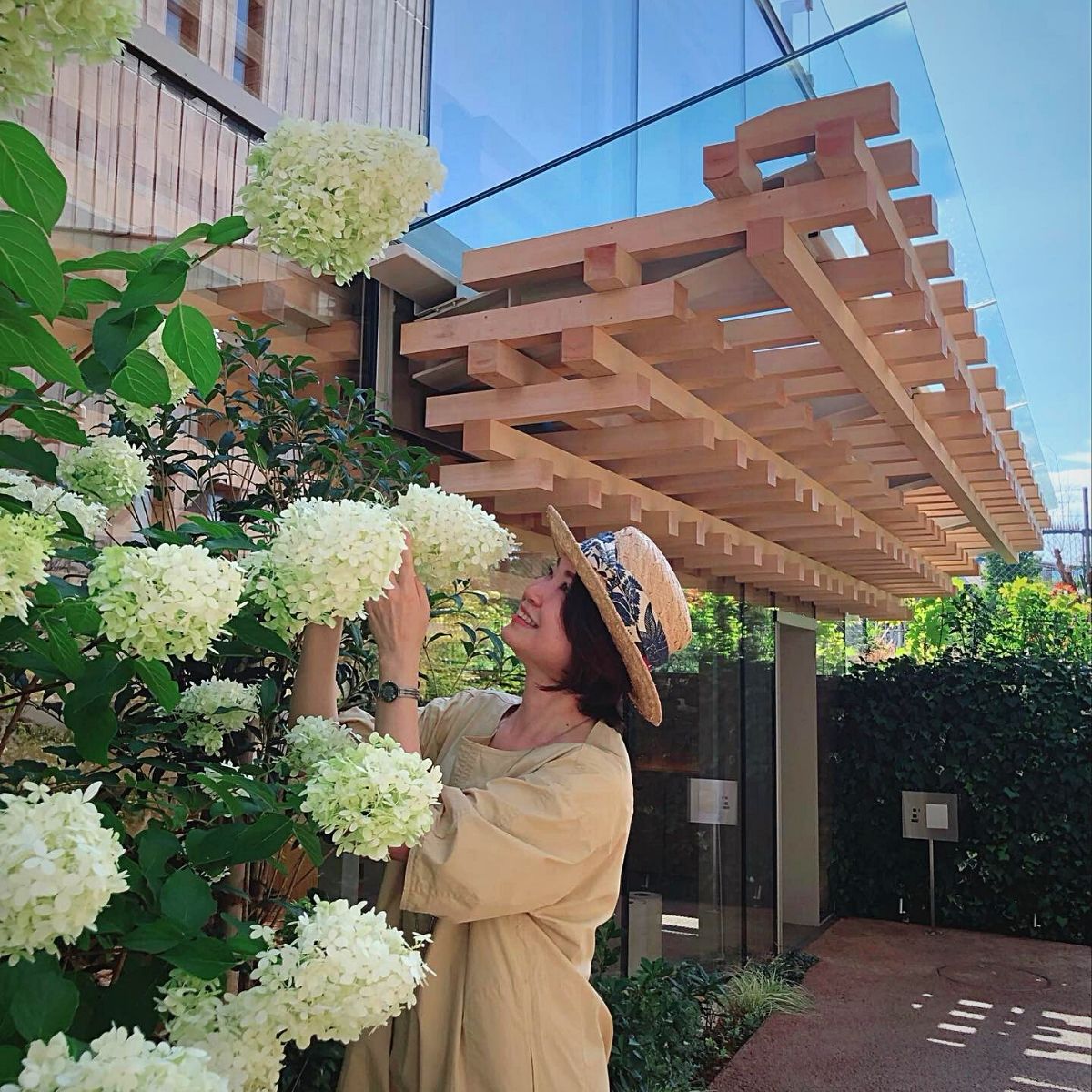
Photo by @hayu_ki_14
It also improves sleep quality, reduces stress, agitation, and anxiety, soothes sore joints, treats headaches, and migraines, alleviates side effects of chemotherapy, eases discomforts of labor, fights bacteria, viruses, or fungus, improves digestion, improves hospice and palliative care, and generally boosts immunity.
Essentially, you’d say, AEAJ Green Terrace is an all-round haven for the senses; a haven which you should try. And still yet, it paves the way for a more rounded and sustainable future.
Feature image by @hayu_ki_14, and header image by @kagurazaka_syuca

